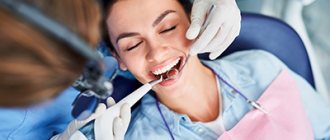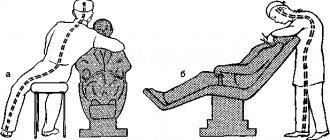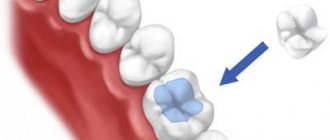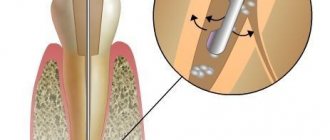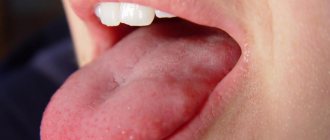Local therapist
Efimova
Natalia Vladimirovna
20 years of experience
District doctor-therapist of the first category
Make an appointment
Lymphadenitis is a disease of the lymph nodes with specific or nonspecific infection. The patient usually feels unwell, weak, sore, and noticeably swollen lymph nodes. The reaction in the form of inflammation and hyperthermia is due to the protective function of the lymphatic system. It protects the body from the spread of infection.
In most stories, the disease itself does not occur independently, but as a complication of the underlying cause. The smallest bacteria enter the lymph through mucous membranes or damaged skin.
With lymphadenitis, the following types of lymph nodes are affected:
- cervical;
- elbows;
- submandibular;
- popliteal;
- inguinal;
- axillary
Symptoms and signs of lymphadenitis
The main signs or symptoms of lymphadenitis in adults are:
- suppuration;
- boils;
- phlegmon;
- hyperemia of the skin near the lymph nodes;
- pain in the area of the lymph nodes;
- migraine;
- lack of appetite or its noticeable decrease;
- general malaise;
- swelling.
Further accumulation of pus and an abscess may occur. If you do not open it in a timely manner, then the contents have a risk of breaking through, causing fever, tachycardia and damage to the body by toxins.
The disease “lymphadenitis” in its already persistent chronic form is not accompanied by acute unpleasant sensations. A slight swelling remains, the pain is mild.
Are you experiencing symptoms of lymphadenitis?
Only a doctor can accurately diagnose the disease. Don't delay your consultation - call
Traditional medicine against submandibular lymphadenitis
Traditional medicine recipes are recommended only as adjuvant therapy. It is impossible to cure submandibular lymphadenitis solely with the help of traditional medicine. However, it can significantly alleviate the patient's condition.
What compresses are allowed for lymphadenitis:
- Echinacea. One of the best for lymphadenitis is a compress with echinacea tincture. It is diluted in warm water in a ratio of 1:2. Then moisten the bandage with the solution and apply it to the inflamed area. It is recommended to apply this compress at night, wrapping your neck with a warm scarf or handkerchief.
- Onion. The onion head needs to be baked in the oven (15 minutes). After cooking, remove the peel and crush the pulp, adding a tablespoon of pharmaceutical tar to it. The mixture is applied to the inflammation overnight.
- Herbal collection. For this compress, take walnut leaves, St. John's wort, yarrow and mistletoe. Add a teaspoon of each product to a glass of water and cook for several minutes. After cooling, you can moisten the bandage with the decoction and apply a compress overnight. The course of treatment should be 14 days.
- Mint. Fresh mint leaves are crushed into a paste, which is applied to the area of inflammation and secured with a bandage. A similar compress can be made from dandelion leaves.
- Gastrointestinal fat. Melt 200 g of fat in a water bath, add three tablespoons of chopped norichnik herb to it. Simmer the mixture in a water bath for four hours. While hot, the mixture is filtered and poured into a glass container. Keep refrigerated. The product is applied to the inflamed lymph nodes three times a day.
- Chicory. Chicory root is crushed and poured with boiled water. After infusing for twenty minutes, the mixture should be crushed and excess water should be poured out. Then the mixture is spread on a gauze pad and applied to the affected area for two hours daily. The compress is secured with film.
People's Councils
Sometimes tincture of pine shoots helps with lymphadenitis. You need to add a glass of sugar and pine shoots (a two-liter jar) to three liters of water. All this needs to be simmered for two hours over low heat, then strained and cooked for another two hours. Drink a tablespoon after meals. The course of treatment is a month.
Don't forget about medicinal herbs. To prepare the product, you need to mix stinging nettle (1 part), hop cones (1), yarrow (1), horsetail (3) and oregano (1). To prepare one dose, you need to mix a tablespoon of the resulting mixture and 0.3 liters of water, then heat in a water bath for 15 minutes. Strain the product and drink three times a day.
To strengthen your immune system during illness, you can regularly make healthy drinks based on blueberries, currants and cranberries. The berries need to be crushed in a glass and mixed with water. Before drinking, you need to let the drink brew.
Garlic tincture is a natural antiseptic. To prepare it, chop two heads of garlic and add a liter of hot water (not boiling water). The infusion must be infused for three days, stirring regularly. Drink a teaspoon three times a day.
Causes
To understand the disease, you need to understand the main causes of lymphadenitis, which can occur in men, women and children. Lymphadenitis in adults is formed due to exposure and active reproduction of staphylococci and streptococci. The cause of the disease is also their breakdown products and released toxins. They penetrate the lymph by contact, lymphogenous and hematogenous routes.
As a result of infection, the infection quickly adapts to new conditions, begins its active reproduction and spread throughout the body.
Routes of infection
The root cause of a secondary disease can be:
- trophic ulcers;
- osteomyelitis;
- caries;
- otitis;
- flu;
- tonsillitis;
- angina;
- tuberculosis;
- gonorrhea;
- plague;
- anthrax;
- syphilis;
- tularemia.
Therefore, if you have the diseases listed above, then try to eliminate them as soon as possible. This will help avoid secondary infection, which is quite difficult to fight.
Possible complications
A diagnosis of lymphadenitis is a good reason to see a doctor and begin treatment immediately. Otherwise, serious consequences cannot be ruled out, which may manifest themselves through:
- fistula;
- thrombophlebitis;
- septicopyemia.
If a fistula ruptures into the esophagus or bronchi, there is a high probability of developing mediastinitis, the formation of bronchopulmonary or esophageal fistulas.
Against the background of chronic lymphadenitis, purulent processes in the form of sepsis or adenophlegmon often occur. Lymph flow is disrupted, scars form, and healthy tissues are replaced by connective tissues.
Prevention and prognosis
With timely treatment of submandibular lymphadenitis, the prognosis is almost always favorable. When the disease becomes chronic, lymphoid tissue may be replaced by connective tissue, and a violation of lymph outflow in the affected area may develop. To never have problems with lymph nodes, it is enough to follow some simple rules.
Preventive measures against lymphadenitis:
- Maintain good hygiene (hands, mouth).
- Visit the dentist regularly to rule out caries, gingivitis, and fungal infections.
- Avoid damage to the skin (cracks, wounds, scratches).
- Treat all injuries with special means.
Prevention of lymphadenitis consists of eliminating infections, timely treatment of teeth and injuries (skin and mucous membranes). It is also important to increase the general and local resistance of the body.
Sources used:
- Infectious diseases: A textbook for honey. universities / Edited by corresponding member. RAMS, Prof. Yu. V. Lobzina. - St. Petersburg: SpetsLit, 2001.
- L. I. Dvoretsky Differential diagnosis for lymphadenopathy. // Directory of a polyclinic doctor.
- Allhiser JN, McKnight TA, Shank JC. Lymphadenopathy in a family practice. J Fam Pract 1981
- Ministry of Health of the Russian Federation
When to see a doctor
A vascular surgeon treats lymphadenitis. You must make an initial appointment immediately after identifying the first symptoms of lymphadenitis. The disease is actively developing, bringing pain, discomfort and a threat to the entire body. Therefore, you should not delay visiting a specialist.
You can get help from a vascular surgeon or help from other specialists at JSC “Medicine” (clinic of academician Roitberg). We employ professionals who can quickly eliminate lymphadenitis of the lymph nodes. They will select comprehensive individual treatment taking into account the existing diseases, age and condition of the patients.
How is lymphadenitis diagnosed?
Diagnosis of lymphadenitis of the face, neck, and armpits is carried out by collecting an anamnesis and a set of clinical manifestations. It is more difficult to deal with severe forms of the disease, against the background of which complications have already arisen.
The doctor needs to determine the root cause, the source of lymphadenitis, and select the appropriate treatment.
Also used for diagnosis:
- puncture;
- taking Mantoux and Pirquet tests for tubercle bacilli;
- chest x-ray;
- palpation of enlarged lymph nodes;
- CT and MRI of the affected segments.
Typically, infectious disease specialists, venereologists, and TB specialists are also involved in the study of the disease. Specialists can prescribe:
- general blood analysis;
- HIV test;
- ENT examination;
- Ultrasound of lymph nodes and abdominal organs.
Acute process
The serous form of this disease is characterized by a slight impairment of the general condition. The submandibular lymph nodes are painful on palpation, enlarged, elastic in consistency, oval in shape, not fused with the surrounding tissues. The skin over them is not changed. Usually, when the process that led to lymphadenitis is eliminated, the inflammatory phenomena subside.
However, in some cases, the serous process can turn purulent, in which case acute purulent lymphadenitis develops.
It begins with severe spontaneous pain in the lymph node, and the patient also notes fever, chills, headache and insomnia. Redness of the skin over the node and adhesion to the surrounding tissues are determined. Palpation reveals a round, painful infiltrate.
Treatment of acute lymphadenitis can be conservative (for the serous form, when physiotherapeutic methods are prescribed) and surgical (for the purulent form), the essence of which is the primary surgical treatment of the lesion, installing a drainage for the purpose of drainage of purulent exudate. But these measures will not bring effective long-term results if the cause that caused the disease is not eliminated. Therefore, it is extremely necessary to remove the causative tooth (or open its cavity), treat the tooth socket (for alveolitis), and also treat infections of the tonsils and ear. For purulent lymphadenitis, the following is indicated: antibiotic therapy, the use of desensitizing agents, rinsing the mouth with antiseptics.
Treatment
Treatment of lymphadenitis in an adult with its catarrhal or hyperplastic form is carried out using conservative methods. To do this connect:
- keeping the patient at rest;
- antibiotic therapy;
- UHF;
- electrophoresis;
- galvanization;
- rest of the affected area of the body;
- taking vitamins.
Additionally, drugs and ointments with a good anti-inflammatory effect that work at the local level are used.
Particular attention is paid to the treatment of lymphadenitis with antibiotics. Before this, it is necessary to test the sensitivity of microorganisms to different types of antibiotics. Select those drugs to which pathogens are particularly sensitive.
If we are talking about purulent lymphadenitis, then you will need to open the ulcers, remove their contents and sanitize the affected areas.
If a tuberculosis bacillus is detected, the patient is sent for treatment in a hospital. This will help to constantly monitor the patient, monitor his treatment and protect other people from potential infection.
To treat the chronic form of the disease, you need to find and treat the main reason why the lymph nodes are suffering. Only this will help you completely get rid of the disease and never think about it again.
Antibiotics for lymphadenitis
When submandibular lymphadenitis reaches an advanced stage, it can only be overcome by taking antibiotics. However, you need to remember that antibiotics help get rid of the infection, not inflammation in the lymph nodes. Only a doctor who has conducted a thorough examination should choose an antibiotic.
In case of inflammation of the submandibular lymph nodes, you need to contact an experienced specialist who can accurately establish the diagnosis. Self-medication in this case is absolutely unacceptable, because if the nature of the pathology is viral, fungal or parasitic, antibiotics will not help.
Most often, the following antibiotics are prescribed for lymphadenitis:
- Ampicillin;
- Flemoxin;
- Amoxiclav;
- Amoxicillin;
- Ceftriaxone;
- Ceftazidime.


